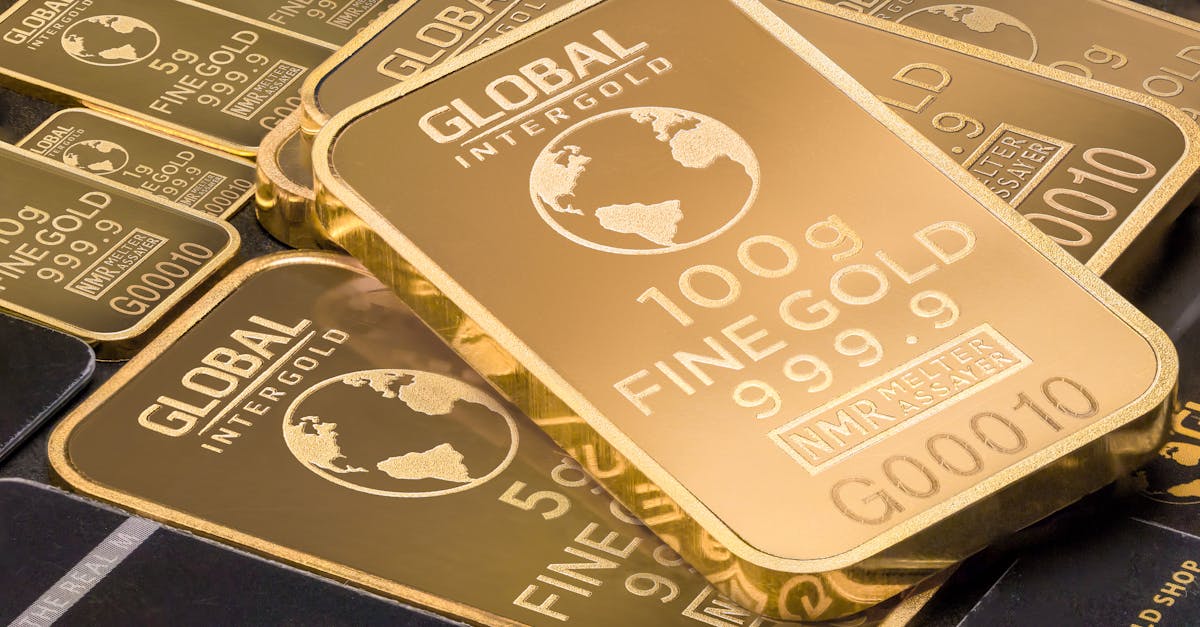The Golden Shield: Unraveling the Correlation Between Inflation and Gold Prices

Navigating the Impact of Inflation on Gold Markets: Securing Your Financial Future
As the world grapples with the rising tide of inflation, investors are increasingly turning their attention to gold as a potential safe haven. Throughout history, gold has served as a store of value, protecting against the erosion of purchasing power during periods of economic uncertainty. This article will delve into the intricate relationship between inflation and gold, empowering you with insights to navigate the complexities of the financial landscape and make informed investment decisions.
Sub-Title: The Golden Shield: Unraveling the Correlation Between Inflation and Gold Prices
Key Insights
- Gold has historically served as an inflation hedge, protecting investors’ purchasing power during periods of rising prices.
- Gold’s price dynamics in high-inflationary environments can vary, but it often exhibits a positive correlation with inflation rates.
- To optimize gold investments during inflationary times, consider diversification and timing strategies to manage risk and potentially enhance returns.
- Incorporating gold into a diversified portfolio can provide several benefits, including risk reduction and the potential for inflation protection.
- Staying informed about economic news and geopolitical events is crucial for investors seeking to navigate the impact of inflation on gold markets and make timely adjustments to their investment strategies.
1. Inflation’s Impact on Gold: A Historical Perspective
Throughout history, inflation has been a persistent economic challenge, eroding the purchasing power of currencies and affecting the value of investments. Gold, a precious metal with a unique combination of properties, has often served as a hedge against inflation, preserving its value and providing investors with a safe haven during periods of economic uncertainty.
Numerous historical events illustrate the strong correlation between inflation and gold prices. For instance, during the inflationary period following World War I, the price of gold exhibited a significant increase. Similarly, during the 1970s, a period characterized by high inflation rates, the price of gold soared, reaching record highs. These historical episodes demonstrate that gold has the potential to maintain its value and even appreciate in the face of rising inflation, offering investors a valuable tool for preserving their wealth.
Economic principles also support the rationale for gold’s role as an inflation hedge. Inflation, often caused by an increase in the money supply relative to the availability of goods and services, reduces the purchasing power of currency. Gold, on the other hand, has a finite supply and is not subject to the same inflationary pressures as fiat currencies. As a result, gold tends to retain its value over time, providing investors with a hedge against the erosion of purchasing power caused by inflation.
2. Understanding the Role of Gold as an Inflation Hedge

Understanding the Role of Gold as an Inflation Hedge
Gold has long been recognized as a reliable store of value, retaining its purchasing power over extended periods. This attribute makes it an attractive investment option for individuals seeking to protect their wealth against the corrosive effects of inflation.
Investors choose gold as an inflation hedge for several reasons. Firstly, gold is a tangible asset with intrinsic value, unlike fiat currencies, which are subject to inflation and devaluation. Gold’s physical properties and limited supply contribute to its enduring value. Secondly, gold has a proven track record as an inflation hedge. As discussed in the previous section, gold prices have historically exhibited a positive correlation with inflation rates, providing investors with a valuable tool for preserving their purchasing power.
In addition, gold is considered a safe haven asset during periods of economic uncertainty and market volatility. When stocks, bonds, and other investments experience downturns, investors often flock to gold as a perceived safe store of value. Gold’s unique characteristics make it an attractive investment option for individuals seeking to diversify their portfolios and mitigate the risks associated with inflation.
3. Gold Price Dynamics in High-Inflationary Environments
In periods of high inflation, the dynamics of gold prices become even more pronounced. Gold’s historical performance during inflationary periods suggests that it can provide substantial protection against the erosion of purchasing power. However, the exact behavior of gold prices can vary depending on the severity and duration of the inflationary environment.
During periods of moderate inflation, gold prices tend to exhibit a steady upward trend, reflecting the market’s demand for a safe haven asset. However, when inflation becomes more extreme, gold prices can experience more volatile fluctuations. Rapidly rising inflation can lead to increased demand for gold as investors seek to preserve their wealth, potentially driving prices sharply higher. Conversely, if inflation expectations subside or the economy enters a deflationary period, gold prices may experience a correction as investors reduce their safe-haven investments.
Understanding the potential market patterns of gold prices in high-inflationary environments is crucial for investors seeking to make informed decisions. By closely monitoring economic data and geopolitical events that may influence inflation, investors can position themselves to benefit from gold’s potential as an inflation hedge while mitigating risks associated with market volatility.
4. Strategizing for Inflation: Optimizing Your Gold Investment

Strategizing for Inflation: Optimizing Your Gold Investment
As inflation continues to rise, investors are increasingly turning to gold as a potential hedge against the erosion of purchasing power. However, to optimize your gold investment strategy, it’s important to consider factors such as diversification and timing.
Diversification is a key principle of investing, and it applies to gold investments as well. By allocating only a portion of your portfolio to gold, you can reduce your overall risk while still benefiting from its potential inflation-hedging properties. The optimal allocation to gold will vary depending on your individual circumstances, risk tolerance, and investment horizon.
Timing your gold investments can also be beneficial. While gold prices have historically performed well during inflationary periods, there may be times when prices fluctuate or experience corrections. By monitoring economic data and geopolitical events that may influence inflation and gold prices, you can make informed decisions about when to buy, sell, or hold your gold investments.
5. Diversification and Gold’s Role in a Balanced Portfolio
Incorporating gold into a diversified portfolio can provide several benefits for investors. Gold’s unique characteristics, including its low correlation to traditional asset classes and its potential as an inflation hedge, make it a valuable addition to a well-balanced portfolio.
Diversification helps to reduce overall portfolio risk by spreading investments across different asset classes and reducing exposure to any one particular asset or sector. Gold, with its distinct risk and return characteristics, can help to diversify a portfolio and potentially improve its risk-adjusted returns. Additionally, gold’s potential as an inflation hedge can help to preserve purchasing power during periods of rising prices.
Determining the optimal allocation to gold in a diversified portfolio depends on individual circumstances, risk tolerance, and investment goals. Factors such as age, investment horizon, and financial situation should be considered when making this decision. It is generally recommended to allocate a small to moderate portion of a portfolio to gold, typically ranging from 5% to 15%.
6. Gold Futures, Options, and ETFs: Alternative Investment Vehicles
Gold Futures, Options, and ETFs: Alternative Investment Vehicles
Beyond physical gold bullion, investors have a range of alternative investment vehicles available to gain exposure to gold prices. These include gold futures, options, and exchange-traded funds (ETFs).
Gold futures are contracts that obligate the buyer to purchase a specific amount of gold at a set price on a future date. They provide a way to speculate on the future price of gold and can be used for hedging purposes. Gold options give the buyer the right, but not the obligation, to buy or sell a certain amount of gold at a specified price on or before a particular date. They offer more flexibility than futures contracts and can be used for various trading strategies.
Gold ETFs are investment funds that track the price of gold bullion. They provide a convenient and cost-effective way for investors to gain exposure to gold without the need to purchase and store physical gold. ETFs can be bought and sold on stock exchanges, just like stocks.
7. Staying Informed and Adapting to Market Changes
Staying Informed and Adapting to Market Changes
In the ever-changing world of finance, staying informed about economic news and geopolitical events is crucial for investors seeking to navigate the impact of inflation on gold markets. Economic data, such as inflation rates, interest rate decisions, and GDP growth, can significantly influence gold prices. Geopolitical events, including trade disputes, wars, and political instability, can also have an impact on the gold market.
By closely monitoring economic and geopolitical developments, investors can make informed decisions about their gold investments. For instance, if inflation expectations rise due to increasing money supply or geopolitical tensions, investors may consider increasing their exposure to gold as a potential hedge against inflation. Conversely, if economic data suggests a decline in inflation or a more stable geopolitical environment, investors may adjust their gold positions accordingly.
Staying informed allows investors to adapt to changing market conditions and make timely adjustments to their investment strategies. By keeping a close watch on economic news and geopolitical events, investors can position themselves to capitalize on potential opportunities and mitigate risks associated with inflation and gold price fluctuations.
Is it advisable to allocate a significant portion of my portfolio to gold?
While gold can be a valuable portfolio diversifier, it’s generally recommended to allocate only a small to moderate portion of your portfolio to gold, typically ranging from 5% to 15%. The optimal allocation depends on your individual circumstances, risk tolerance, and investment goals.
How do I stay updated on economic news and geopolitical events that may affect gold prices?
To stay informed, you can follow reputable financial news sources, subscribe to economic newsletters, and monitor government announcements. Additionally, keeping track of major geopolitical developments through news outlets and analysis platforms can help you make informed decisions.
Are there any risks associated with investing in gold?
Like any investment, gold is subject to market risks. Gold prices can fluctuate, and there is always the potential for losses. It’s important to carefully consider your investment goals, risk tolerance, and time horizon before investing in gold.
Table of Key Insights
| Key Insight | Description | |—|—| | Gold as an Inflation Hedge | Gold has a strong historical correlation with inflation, acting as a store of value and a hedge against rising prices. | | Gold Price Dynamics in High Inflation | Gold’s price movements during high inflation can vary, but generally exhibit a positive correlation with inflation rates. | | Optimizing Gold Investments | Diversification and timing strategies can help investors optimize their gold investments during inflationary periods. | | Gold in a Diversified Portfolio | Incorporating gold into a diversified portfolio can provide risk reduction and potential inflation protection. | | Staying Informed | Monitoring economic news and geopolitical events is crucial for navigating the impact of inflation on gold markets and making informed investment decisions. |